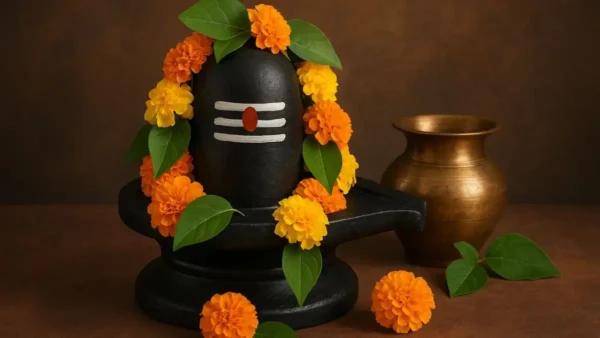According to the Hindu calendar, the month of Shravan begins when the moon enters the Shravan Nakshatra. That’s how this sacred month got its name. Over time, “Shravan” came to be commonly known as Sawan. This year, the holy month dedicated to Lord Shiva begins on Friday, July 11, and concludes on Saturday, August 9.
Shravan holds immense spiritual significance in Sanatan Dharma. Devotees worship Lord Shiva and Goddess Parvati with full rituals during this month. Practices such as Jalabhishek (offering water), Rudrabhishek, and fasting are considered highly auspicious.
Why Shravan Is Dear to Lord Shiva
The month of Sawan is entirely devoted to Lord Shiva. It commemorates the divine reunion of Lord Shiva and Goddess Parvati and symbolizes the time when Lord Shiva blesses devotees by relieving their suffering. It is believed that during this month, Lord Shiva visits his in-laws’ home (Earth), and special prayers during this time are especially fruitful.
As per legend, it was during this month that Goddess Parvati undertook intense penance to win Lord Shiva as her husband.
The Legend of Samudra Manthan
According to Hindu mythology, during the great Samudra Manthan (churning of the ocean), the first thing that emerged was Halahal, a deadly poison that threatened the existence of the universe. To protect the world, Lord Shiva drank the poison, which turned his throat blue — earning him the name Neelkanth.
To alleviate the effects of the poison, the gods offered him water. This act laid the foundation for the tradition of offering water to Lord Shiva during Sawan. Some beliefs also suggest that the churning itself happened during this sacred month.
The Kanwar Yatra
One of the most prominent traditions of Sawan is the Kanwar Yatra. Devotees, known as Kanwariyas, collect Ganga water from holy places like Haridwar, Gaumukh, or Gangotri and offer it to Shivalingas in local temples.
The yatra continues through the month and peaks on Sawan Shivratri, when offering this sacred water is believed to yield immense spiritual merit. Legend has it that the Kanwar tradition was initiated by Lord Parashuram.
How to Worship in Sawan and Its Significance
During Sawan, devotees are advised to:
-
Wake up early and bathe.
-
Offer Ganga water to a Shivalinga, either at home or in a temple.
-
Present offerings of milk, bilva leaves, bhang, dhatura, and shami leaves.
-
Perform Shiva Aarti and offer prasad.
-
Observe Sawan Somvar Vrats (Monday fasts) with a proper vow and fasting through the day.
-
Donate food, clothes, and money to the poor and needy.
Worshiping Lord Shiva in Sawan is believed to:
-
Fulfill desires.
-
Remove planetary doshas (flaws).
-
Bring peace, prosperity, and happiness in married life.
-
Bless unmarried women with a suitable life partner through Monday fasting.
Dates for Sawan Somvar Vrat in 2025
-
July 14 – First Somvar Vrat
-
July 21 – Second Somvar Vrat
-
July 28 – Third Somvar Vrat
-
August 4 – Fourth and Final Somvar Vrat
Sawan is not just a month of devotion—it is a spiritual journey. Through fasting, prayer, and acts of kindness, devotees seek blessings from Mahadev for a peaceful and prosperous life.







